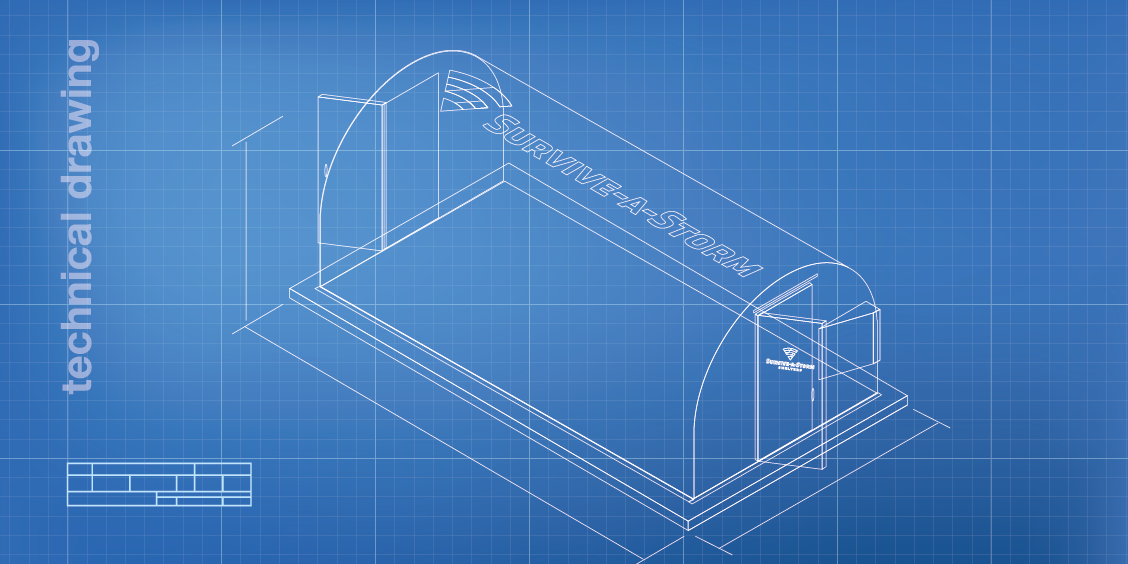CATEGORIES:
FEMA 361: Understanding Commercial Tornado Shelters and Community Safe Rooms
October 15, 2024

When it comes to protecting people from the devastating effects of storms, having a well-designed tornado shelter is crucial. While FEMA 320 provides valuable guidance for homeowners looking to build or buy individual tornado shelters, FEMA 361 takes things a step further by offering extensive guidelines specifically for commercial and community safe rooms. The document, found on the FEMA website, is essential for architects, engineers, and facility managers who are responsible for the safety of large groups of people in public and commercial buildings.
FEMA 361 outlines the stringent requirements necessary to design and construct safe rooms for businesses and public places that can withstand the extreme forces of nature. By adhering to these guidelines, businesses and organizations can ensure that their facilities provide the highest level of protection for employees, customers, and the general public during severe weather events. In fact, it is the basis for all Survive-A-Storm commercial tornado shelters.
FEMA 361 sets strict design criteria to ensure commercial tornado shelters can protect occupants during extreme weather events. These guidelines help ensure that the safe room remains intact and functional, providing a secure refuge during tornadoes.
Why FEMA 361 Matters
The importance of FEMA 361 lies in its comprehensive approach to safety. It doesn’t just consider the strength of the structure but also factors in occupant capacity, ventilation, emergency lighting, and accessibility. The goal is to create secure, resilient spaces that provide reliable protection for occupants in public and commercial settings. The guide provides a critical framework for designing and constructing safe rooms that can protect large groups of people.
Key Elements of FEMA 361
1. Structural Integrity
The backbone of FEMA 361 is its focus on the structural strength of the safe room. The guidelines ensure that these rooms can resist high winds, flying debris, and other hazards associated with severe weather. This includes specific recommendations on materials, construction techniques, and the overall design to prevent collapse or breach.
2. Occupant Safety and Comfort
FEMA 361 goes beyond just structural considerations. It also addresses the needs of the people inside the safe room. This includes ensuring that there is enough space, proper ventilation, and emergency systems like backup lighting and communication tools. These elements are crucial for maintaining a safe and comfortable environment during an extended stay in the safe room.
3. Location and Accessibility
The placement of the safe room within a building is another critical aspect covered by FEMA 361. It emphasizes the need for easy accessibility, especially in emergencies. This includes ensuring that safe rooms are easily reachable by all occupants, including those with disabilities, and that they are located in areas that minimize the risk of injury.
Being such a comprehensive document also means that it can be complicated. Many companies choose to purchase a storm shelter that adheres to FEMA 361 guidelines rather than build one themselves. Buying a pre-manufactured commercial storm shelter means that not only do you get a storm shelter built to these guidelines, but you also get one that is designed and tested for safety, offering proven protection! All Survive-A-Storm commercial shelters adhere to the guidelines of FEMA 361.
Pre-manufactured shelters also save you time and money by eliminating specialized engineering and construction oversight. By opting for a shelter that complies with FEMA 361, companies can have confidence that they are providing a safe, compliant, and efficient solution for protecting employees and visitors during severe weather.
FEMA 361 Compliance
These guidelines provide a clear path to creating spaces that are safe and functional during emergencies. For organizations responsible for large groups of people, adhering to FEMA 361 is not just about meeting a standard; it’s about taking every possible measure to protect lives. Storm and tornado shelters that are built according to FEMA 361 guidelines will prevent tragedy during severe weather events. There's no doubt about that.
When buying premanufactured tornado shelters, it's important to remember that FEMA is not a product testing agency and does not “certify” or lend its authority to any group. So, beware of companies offering “FEMA-approved” or “FEMA-certified” tornado shelters.
Survive-A-Storm Shelters offers a variety of above-ground and underground commercial tornado shelters, and we're just a call or click away if you have questions about commercial shelters. Our experts are happy to guide you in choosing a tornado shelter for your business.
To find a FEMA 361-compliant shelter, call 888-360-1492 or contact us via our website.




